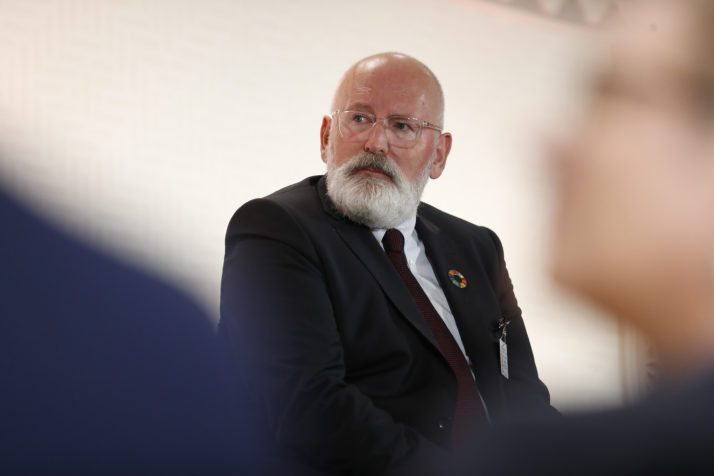A Climate Pact for Luddites
How the Green Deal’s most ambitious element connects everything - including Zoom calls, Ada Lovelace and Frans Timmermans
“Jim, you’re on mute.”
“We can see you talking Jim, but we can’t hear you.”
“I’ll send Jim a message that he hasn’t turned on his mic.”
“Sorry about that everyone. I guess I was on mute. I am such a Luddite. As I was saying….”
At some point in recent history ‘Luddite’ become a synonym for someone who can’t use technology. That is a very shallow view of the violent popular movement that sprang up in 19th century England to combat the industrial revolution.
But why are we even talking about the industrial revolution in an article about the EU’s Climate Pact?

Well, earlier this year Frans Timmermans compared ‘the impending transformation (of the Green Deal) to the disruptive effects of the industrial revolution’ so it is worth looking at those effects to see what it is the Climate Pact needs to do and what needs to be put in place for it to be successful.
The Luddites were a secret-oath organisation who destroyed textile machines, and occasionally resorted to murder, as a form a protest. It’s not that they didn’t understand technology. On the contrary, they saw very clearly that textile technology was a direct threat to their livelihoods and their families’ well-being.
The Luddite movement and the immense social upheaval was a response to changes in just one industry – textiles. With the Green Deal we are talking about changing countless industries and elements of our lives all at once. No one will be unaffected. Most of the changes will be welcomed. But there isn’t a sliver of society that might not have a Luddite-like (that is, rational) response to the Green Deal because it makes them or their family worse off in the short term.
We could all become Luddites to some extent.
So the first lesson from the 18th century for today’s Climate Pact is that we must listen, understand and explain these changes – and be ready to redesign the changes – to ensure that no one is left behind.
-Lead locally
The only way to develop enough understanding and to enact changes with enough sensitivity is to design the Green Deal and Climate Pact from the ground-up with local action from local authorities.
We must reform the 10,000 strong Covenant of Mayors initiative and enable them to engage more broadly with all elements of their communities to build the necessary trust and understanding for change.
–Coordinated response from local, provincial/regional and national governments
Even if local concerns had placated the Luddites a heavy-handed national response involving show trials and death sentences would have inflamed tensions. In the end, Lord Byron was one of the few MPs who voted against making ‘machine breaking’ a capital crime.
New governance for the Covenant of Mayors initiative has to be coupled with a matching commitment from provincial and national governments. By aligning the actions, resources and institutions of our different levels of government we build further momentum for change. To top it off, a specific EU budget line should further aim to support this governance engineering around climate action, by providing local and regional authorities with the right resources to coordinate the process.
–Go beyond the immediate issue (jobs or energy)
The industrial revolution wiped away the existing social contracts which meant more than just losing a job, it put into question the well-being of family and future generations. (There’s a great article here on the conundrum facing some Romanian coal miners https://www.politico.eu/article/coal-miners-wary-of-a-greener-future/ )
Local authorities and their communities will need to adopt broad-based local resilience pacts. These pacts will be underpinned by new socio-economic models based on more participative and circular processes, short circuit supply chains and redefined links between citizens and their local environment.
By owning the Green Deal at community level, with citizens, businesses, schools and more determined to drive the change, rather than have it thrust upon them, we can move faster and farther than we ever thought possible.
Our position paper has more detail on how the Climate Pact needs to be grown to harness the potential of our society and this transition. It is clear that contributions will be needed from every corner of society and every technology to make the transition as fast and as positive as possible.

Fortunately for us we have the lessons of the Luddites and an incredibly advantage today thanks to digital technologies. Technologies developed thanks to the work of Ada Lovelace, the world’s first computer programmer and the daughter of Lord Byron.
